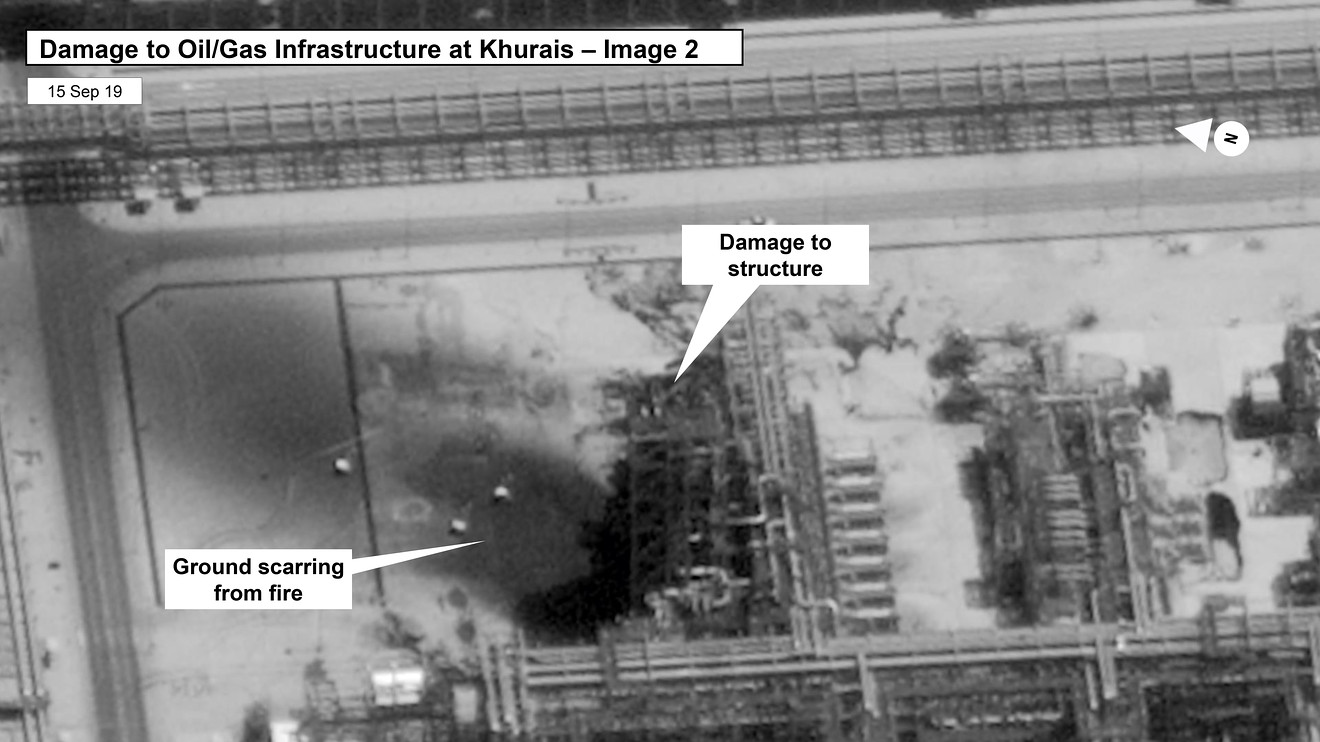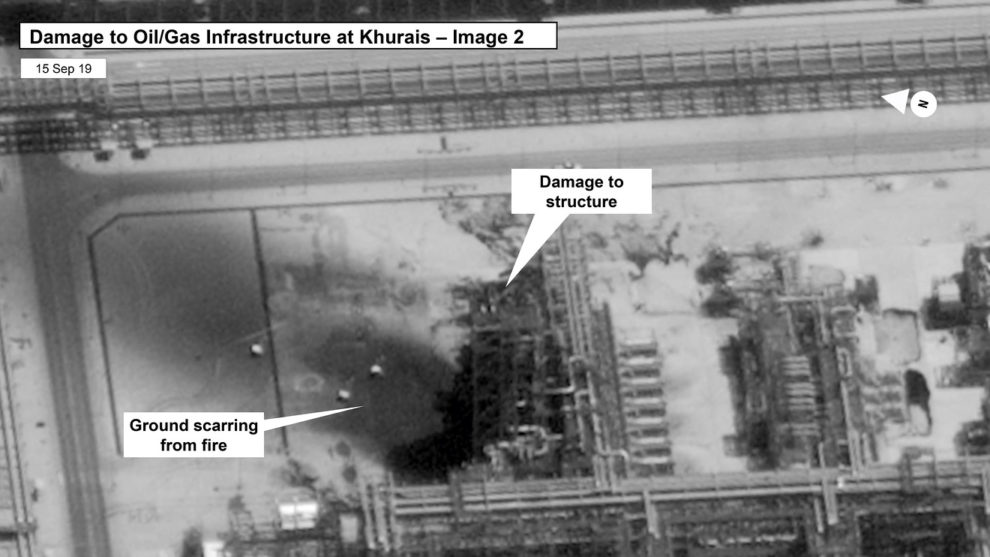
Oil futures surged in electronic trading Sunday, with West Texas Intermediate set to jump more than 10% on Monday after a weekend drone attack on major crude facilities in Saudi Arabia threatened to create a supply crunch that was roiling global crude markets.
West Texas Intermediate crude for October delivery CLV19, +8.97%, the U.S. benchmark contract, was up 10.4%, or $5.71, at $60.57 a barrel on electronic exchange Globex on Sunday. A gain of that magnitude, if prices hold through Monday’s settlement, would represent the largest daily gain for the most-active contract since Feb. 12, 2016, according to FactSet data.
November Brent crude BRNX19, +9.96% jumped $6.97, or 11.6%, to trade at $67.18 a barrel, which would also mark the sharpest daily rise for the international benchmark grade since February 2016.
The run-up in prices would also place both Brent oil and WTI at their highest levels since around May.
Price spikes in crude come after a Saturday attack on Saudi Arabia’s Abqaiq plant and its Khurais oil field, which has thrown offline an estimated 5.7 million barrels of the kingdom’s crude oil production a day, equivalent to more than 5% of the world’s daily supply.
The Wall Street Journal, citing Saudi officials, have said a third of output would be restored on Monday, but a return to full production may take weeks, experts have said.
Analysts at S&P Global Platts estimated that Brent oil, the international benchmark, could see a $5 or $10 price surge from its current levels, which could push it to test the $70 range.
“As such prices are likely to break out of the current $55-65/Bbl options range, to test the high $70s as currently supported by fundamentals,” the researchers said.
“In my opinion, it would appear that 3 million barrels will be back online in the next two to five days, but around 2.7 million barrels will take longer due to the unique nature and customized gear at Abqaiq in particular,” wrote Robert Yawger, director of energy at Mizuho Securities, in a Sunday research note.
The Abqaiq facility normally produces 9.8 million barrels of oil a day and is considered one of the world’s largest processors of crude.
President Donald Trump said in a series of tweets that he has authorized the release of the Strategic Petroleum Reserve, or SPR, “if needed” to “keep the markets well-supplied.”
The U.S. Department of Energy said the 630 million barrels from the SPR, the largest stockpile of crude in the world, would be made available “to offset any disruptions to oil markets as a result of this act of aggression.”
“The SPR was last made available during the 2011 Libyan supply disruptions,” Yawger noted
The threat of further escalation involving the U.S. also holds the potential to drive crude prices higher still. Trump on Sunday said the U.S. was “locked and loaded,” suggesting that military action may be undertaken. U.S. Secretary of State Mike Pompeo has blamed Iran for the attacks, which Tehran officials have denied.
Tensions are already elevated between Iran and the U.S. after Trump pulled out of a global nuclear pact and imposed fresh sanctions against Iran.
Researchers from the Eurasia Group on Sunday said “the scale of [the weekend] attack will encourage markets to re-examine the need for considering an oil geopolitical risk premium.”
“A small $2-$3 premium would emerge if the damage appears to be an issue that can be resolved quickly, and $10 if the damage to Aramco’s facilities is significant leasing to prolonged supply outages,” Eurasia analysts wrote in a Sunday research report. “At the moment, global balances not as loose as 2018 but not tight either. As a result, the U.S. would only release crude from its Strategic Petroleum Oil Reserves (SPR) if damages to Saudi infrastructure appear critical or oil prices spike significantly,” they said.











Add Comment